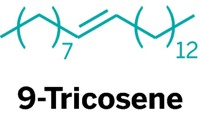Advertisement
Grab your lab coat. Let's get started
Welcome!
Welcome!
Create an account below to get 6 C&EN articles per month, receive newsletters and more - all free.
It seems this is your first time logging in online. Please enter the following information to continue.
As an ACS member you automatically get access to this site. All we need is few more details to create your reading experience.
Not you? Sign in with a different account.
Not you? Sign in with a different account.
ERROR 1
ERROR 1
ERROR 2
ERROR 2
ERROR 2
ERROR 2
ERROR 2
Password and Confirm password must match.
If you have an ACS member number, please enter it here so we can link this account to your membership. (optional)
ERROR 2
ACS values your privacy. By submitting your information, you are gaining access to C&EN and subscribing to our weekly newsletter. We use the information you provide to make your reading experience better, and we will never sell your data to third party members.
Biological Chemistry
Sea hares' chemical alarm signal
May 8, 2006
| A version of this story appeared in
Volume 84, Issue 19
If you are soft, devoid of tooth and claw, slow, and tasty to predators in your environs, chemical defenses are your best card. Indeed, when attacked, the sea hare Aplysia californica squirts out defensive cocktails from glands on its back. For several years, Charles Derby and Cynthia Kicklighter of Georgia State University and their colleagues have been teasing apart the chemistry and biology of these secretions. Last year, they reported that certain free amino acids in the secretions act like food decoys, causing lobsters to attend to the secretions instead of the hares (C&EN, April 4, 2005, page 14). On April 27 in Sarasota, Fla., at the annual meeting of the Association for Chemoreception Sciences, the researchers reported the identities of several other components, including the nucleosides uridine and cytidine, that carry alarm signals to nearby sea hares. When exposed to these in the lab, and presumably in the wild by brethren under attack, sea hares in the vicinity take to the hills, sometimes "galloping" away with inchworm motions, Derby notes.



Join the conversation
Contact the reporter
Submit a Letter to the Editor for publication
Engage with us on Twitter